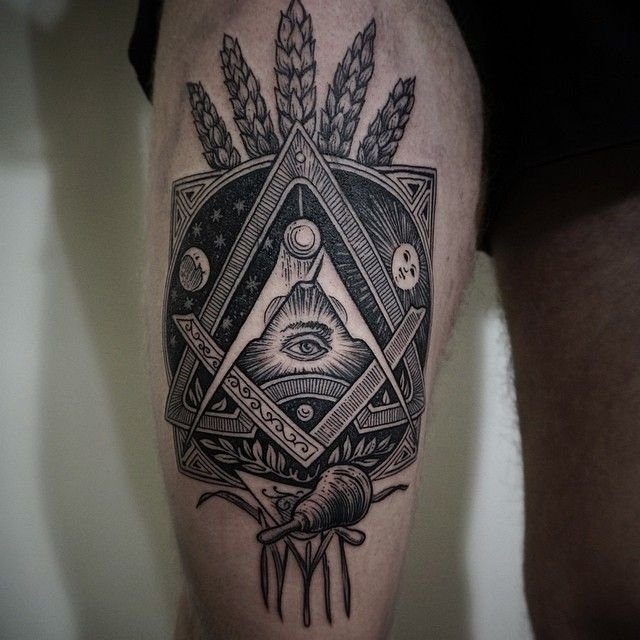What about macro level, the situation cannot be that simply circumscribed in this case. First, to pass to macro level it is required to define a value of homemade tattoo that will bring us to it. Clearly, this has to be something easily universalized, like the design. In this case then, there have to be found particular designs that will be practiced in homemade tattooing more often than the others, which considering the macro level we are focused on will bring us to the subcultures deeply involved in DIY ideology. Such subculture is hardcore punk, and more specifically, part of it called Straight Edge, or sXe. Straight Edge was a movement inside hardcore scene, which started in 1980s as a counterweight to punk (Sutherland 2006). The basic postulates of sXe was life without alcohol, drugs or any kind of intoxicants, in general a drug-free life. There existed also trends of veganism and animal right defense inside Straight Edge. Taking its roots in hardcore punk, the name of the movement was also taken from a song “Straight Edge” by the band Minor Threat from Washington D.C. (Wood 2012). Another band that contributed into the movement was Teen Idles, who are responsible for the symbol that became associated with sXe – the X that is usually worn as a tattoo on the back sides of both palms, however can be seen on other parts of the body as well. In 1980 Teen Idles during their tour were denied entry to the club where they had to perform because of their age that was under legal drinking age. As a result they were allowed to perform, but they were drawn large X symbols with a marker on back sides of both palms to indicate their age and warn bartenders about it. After the band returned home to Washington D.C. they first proposed this model to local club owners and then incorporated the photo of two crossed hands with X symbols on back of the palms on the cover of their album, associating the X with Straight Edge and showing an example of use of symbol to the followers (Azerrad 2002). Mainly after their album Minor Disturbance which had described above photo on the cover, the symbol started to gain popularity within straightedgers as a tattoo design. And mentioned before sympathy towards DIY movement naturally resulted in Straight Edge homemade X tattoos, given to each other by fellow sXe involved individuals. This tattoo also appears to have several layers of meaning, but compared to “paired” homemade tattoo has wider range of effect. First, X tattoo for the movement served as an identifier, helping to differentiate drug-free like-minded persons from “regular people”. Then, being worn on one of the most visible spots, the tattoo in a way was making a protest statement, capturing attention of the people around, but, of course, without knowledge of the code required to access information codified in the sign, this attention results in questions or indignation only. Speaking about code, from sXe example it can be seen that tattoo can serve as a sign-system, and thinking of “paired” homemade tattoo practice it can be concluded that this system can be of completely different scales. As the concept of analyzed system can be used as a language, linguistic terms of langue and parole coined by de Saussure (1959) can be perfectly applied here.
